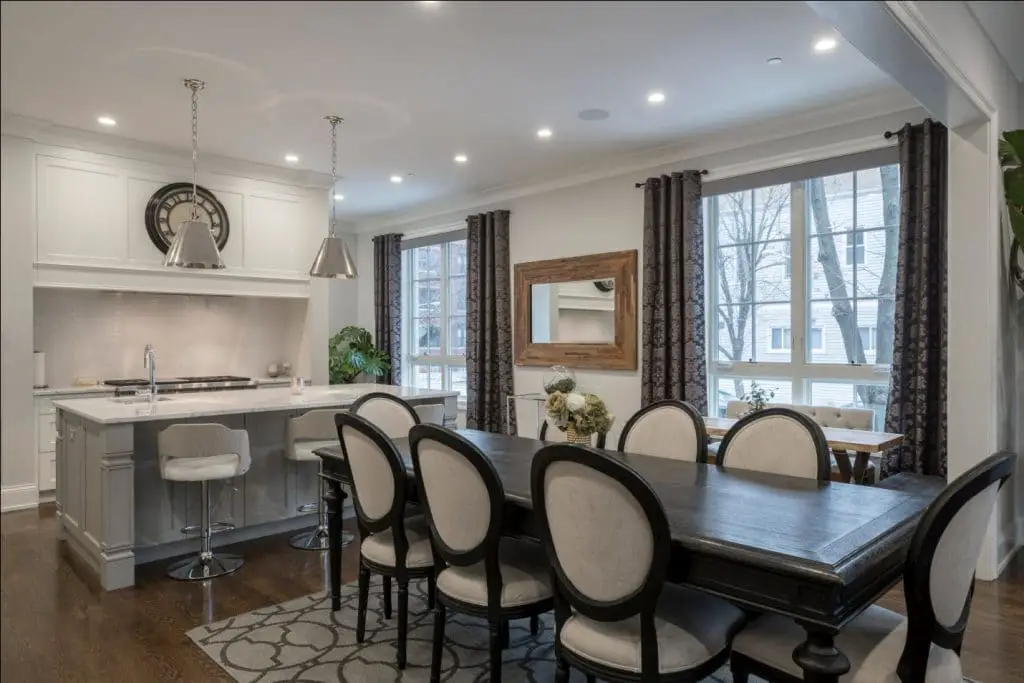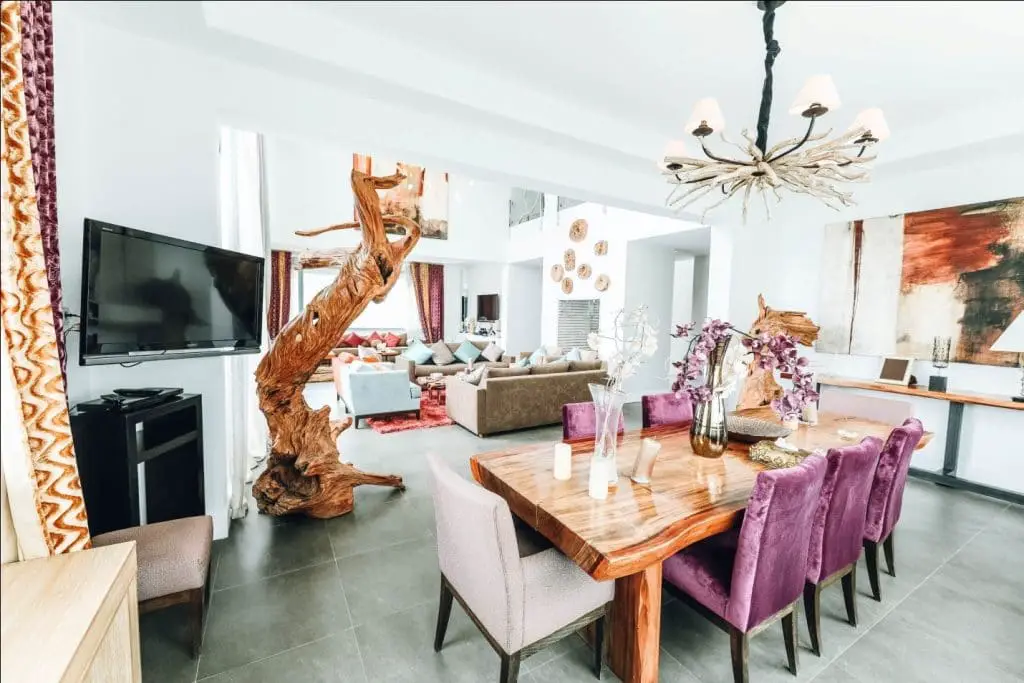Dinnertime is an important part of every household, as all scattered family members convene at the dining table for a delicious meal paired with great conversation. Lack of a dining room or proper dining space can put a massive damper on these plans, resulting in everyone eating in their own bedrooms. Additionally, dining rooms are also the ideal space to host wonderful lunch and dinner parties and get-togethers.
To reap the numerous benefits of dining rooms, you will need a space that’s big enough to support your family members and/or guests. That said, don’t worry if you have a small dining room; there are steps you can take to maximize space to make the best of it.
Step 1: Deciding a Basic Dining Room Layout
It’s critical to have a clear idea of the layout you want when designing or enhancing dining room space. When it comes to functionality, dining room layouts can be divided into three main times, each with its unique uses. By choosing your dining room’s function and layout first, you’ll be able to adjust your design choices to match the setting well.
Read Also: Best Flooring for Your Dining Room
Note: Bear in mind that your dining room probably won’t be an ideal fit for any one of the options, mainly since rooms come in various sizes and shapes. These basic layouts are just to provide you with a foundation to center your dining room along.
The Formal Dining Room
As the name suggests, a formal dining room is the most traditional of options, characterized by a grand 12-seat seating in the center of a room. This layout is typically popular in big houses and is chosen by those who regularly entertain guests.
The Pass-Through Dining Room
Smaller than a formal dining room, a pass-through dinner room is typically located between other rooms of the house. This room generally supports up to ten people, with some additional space for storage. Although this layout is generally meant for a large rectangular table, the room’s shape often makes it more advantageous to incorporate a round table instead.
The Dual-Purpose Dining Room
If your home doesn’t have a separate room for the dining area, creating a dual-purpose dining room in a large space of your home might be a great idea. This highly customizable layer can easily fit into your daily practical life. It usually features a small, rectangular table that typically hosts 4 to 6 people, but you can always add or remove chairs to accommodate the company you have.
Step 2: Applying the Layout to Your Space
Once you settle on the perfect layout for your dining room, you can start the process of customizing your plan according to the environment. Maximizing your dining room layout will require you to adapt and adjust to your space while adopting a realistic approach. Space restrictions can considerably change your original vision of the plan, so it’s critical to remain open to adjustments.
It may be a good idea to keep things simple and start incorporating things one by one to avoid overcrowding your dining room space too early and too fast. It may be tempting to get your hands on an extravagant piece of furniture, but it’s important to keep things in perspective by incorporating items that match your space.
Another major element to consider when executing your dining room layout is – storage. You will need to brainstorm creative ways to create storage space for your dinnerware and other items. Even if your space appears too small, there are various ways to build additional storage while conserving the room’s functionality.
That said, here are some interesting tips to maximize your dining room layout.
Invest In Dual-Purpose Furniture
Opting for furniture with multiple uses can make your dining room multi-purpose alongside making it appear larger. Whether it’s opting for a foldable dining table or installing bench seating that doubles as storage, make sure to explore your options to allow your dining room to accomplish twice as much in your home.
Opt for In-Shelves Instead of Cabinets
Storage space is a critical element of a good dining room area. However, it’s important to remember that storage isn’t just limited to cabinets. While cabinets are great at protecting expensive dinnerware from dust, they take up more wall space. So, opting for shelving units instead of cabinets can help you save space while enhancing the storage area.
Invest In Small Furniture
You may want to create a luxe and extravagant dining room. However, your small dining space might not have the space you need to install a grand table. In such cases, it’s important to be realistic about the type and size of furniture your dining table can support without looking overdone. Opting for a smaller, more modern dining room set can serve the same purpose, giving you the look and vibe you want while adding extra space for people to move around comfortably.
Utilize Wall Space
Although the crux of a dining room is a dining table taking center stage, if your room is too narrow, consider utilizing your wall space. Fold-out tables have become quite popular for those looking to create a dining area with increased functionality. You can also use these foldable wall tables for various other purposes, such as studying. Moreover, once these tables are folded, you’ll have enough space to convert the living space into any room you want.
Read Also: 6 Ideas for a Modern Dining Room
Consider Floating Shelves
When you have limited space, you should want to utilize as much of it as possible, and floating shelves are an excellent way to do so. Instead of opting for bulky furniture and space-consuming storage options, such as cupboards, add a few modern floating shelves to your wall. Not only will this give you space to display your cool cutlery and dishware, but it will also give your room an artistic appearance.
Incorporate Plenty of Light
One of the best ways to make a limited area appear more open and space is to incorporate lots of light. You can simply do this by opening up your blinds or curtains to let in natural light, or you can also install super lightweight curtains to give your room a bright and airy feel. Moreover, don’t worry if your dining room doesn’t have a window; save the day by installing lots of lamps and mounted light fixtures.
Wrapping Up
Your dining room or space is an area where you gather with your family and friends, sharing a great meal and lots of laughter and memories. Given the importance of this space, you shouldn’t have to sacrifice its look and feel due to limited space. Regardless of what size of space you have, you can utilize several furnishing and decoration options to make the best of it. That said, we hope that our tips to maximize your dining room layout can help you create a warm and homely space in your home.



